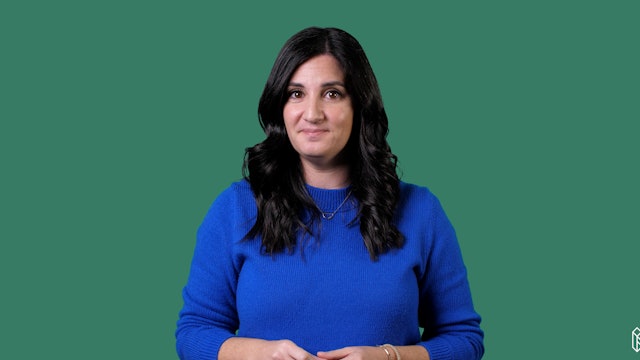-
What is Neurodiversity?
Expand your understanding of neurodiversity, the natural range of variations in human cognitive processing. Learn why the benefits of a neurodiverse team – greater innovation, problem solving and creativity -- make it more than worthwhile to accommodate the work styles of neurodiverse employees.
-
History of Neurodiversity
The brain contains a range of natural cognitive variations, called “neurodiversity,” impacting learning, attention, mood, sociability, and other functions. Organizations should recognize that neurodiversity can be a benefit to productivity, creativity, innovation, collaboration, and diversity of ...
-
Welcoming Neurodiversity in the Workplace
Expand your understanding of neurodiversity and the many forms it may take. Recognize the stigma that causes some individuals to keep their neurodiversity secret. Learn best practices for inclusion at your organization to maximize the proven benefits that neurodiversity can bring.
-
3 Ways to Accommodate Employees on the Autism Spectrum
Sometimes, people who have Autism Spectrum Disorder need accommodations to do their best work. And, sometimes they don’t. Here are three ways you can accommodate and be more inclusive of employees with Autism.
-
Legal Protections for People with Intellectual and Developmental Disabilities
Explore how the ADA and EEOC help to protect people with intellectual and developmental disabilities from unfair treatment and workplace discrimination. Examine how the ADA applies to every step of the employment process, including hiring, pay, benefits, promotion, and termination.
-
What is Dyslexia?
Learn more about dyslexia, a neurobiological learning disability that makes reading more challenging for roughly 1 in 5 people. Discover the high-level skills and competencies that often come naturally to people with dyslexia, adding to their value as employees and leaders.
-
How Employees with IDD Contribute to the Workforce
Expand your thinking about the benefits of adding employees with intellectual and developmental disabilities (IDD) to your team. Consider that people with IDD can fill existing positions and perform well in many areas of business operations.
-
Thinking Differently About Different Ways of Thinking
32.9 MB
-
Best Practices for Respectful Interaction w/ People with Neurological Conditions
These considerations will help you ensure your workplace is welcoming and respectful to people with cognitive, psychological, and learning disabilities. Includes tips for communication and optimizing the physical environment.
-
What is Autism Spectrum Disorder?
Autism Spectrum Disorder (ASD) is a developmental condition that causes social, communication, or behavioral differences. Gain clarity on what ASD is.
-
Is Autism a Disability?
The Americans with Disabilities Act (ADA) classifies Autism Spectrum Disorder (ASD) as a disability and protects people with ASD from employment discrimination. In contrast, some people don’t consider ASD to be a disability, but rather a difference, or even an advantage.
-
Is it Okay to Ask Someone if They Have Autism?
Understand why it’s overly personal and inappropriate to ask someone about their medical conditions, including whether they have Autism Spectrum Disorder, or ASD. Medical and psychological conditions are deeply personal topics that many people don’t feel comfortable discussing.
-
What is Developmental Disability?
A developmental disability involves one or more chronic impairments to physical ability, learning, language, and behavior. Understand the meaning of developmental disability.
-
Communicating Effectively with People with Intellectual Disabilities
Benefit from these helpful best practices for communicating and collaborating effectively with people with intellectual disabilities. Learn how to adapt your communication style to fit the needs of your colleagues.
-
How Can I Support Colleagues with Intellectual Disabilities?
Gain insights and get helpful guidance for supporting your colleagues with intellectual disabilities. Discover three keys to helping colleagues feel welcome and included, creating a more productive workplace for all.
-
What is Down Syndrome?
Get a basic definition of Down syndrome, a genetic disorder that affects about 1 in every 800 American babies, affects facial features and speech, causes intellectual disability, and an increased risk for various health conditions.
-
The Benefits of Hiring Individuals with Intellectual Disabilities
Hiring people with intellectual disabilities is a win-win for companies and their employees. Learn about the benefits of tapping into this talent pool.
-
What is Masking?
Learn what masking is, who practices it, and how its effects can be harmful.
-
Should Interview Questions Be Shared With Candidates Before a Job Interview?
Providing interview questions with candidates in advance of a job interview allows all people, regardless of thinking style, to come up with their best responses.
-
3 Mistake to Avoid When Communicating with People with Intellectual Disabilities
If you’re not experienced at communicating with people with intellectual disabilities, you may be worried you’ll say the wrong thing. Learn from these common mistakes to avoid making them yourself.
-
Types of Diversity
Learn about several dimensions of diversity including race, ethnicity, gender identity, sexual orientation, neurodiversity, age, ability, religion, and acquired diversity.
-
How to Recruit Employees with Intellectual and Developmental Disabilities
People with intellectual and developmental disabilities serve as dedicated and valued employees at many organizations. Learn how to recruit employees who have intellectual and developmental disabilities.
-
How Should I Refer to People Who Have Intellectual Difficulties?
When referring to a person with intellectual difficulties, it’s important to choose your words carefully. Keep the conversation centered around their individuality, as opposed to their condition. Here are some tips for using inclusive, supportive language.
-
What is Executive Dysfunction?
Understand the definition of executive dysfunction, how it impacts work performance, and what steps can be taken to empower employees who have this condition.


























